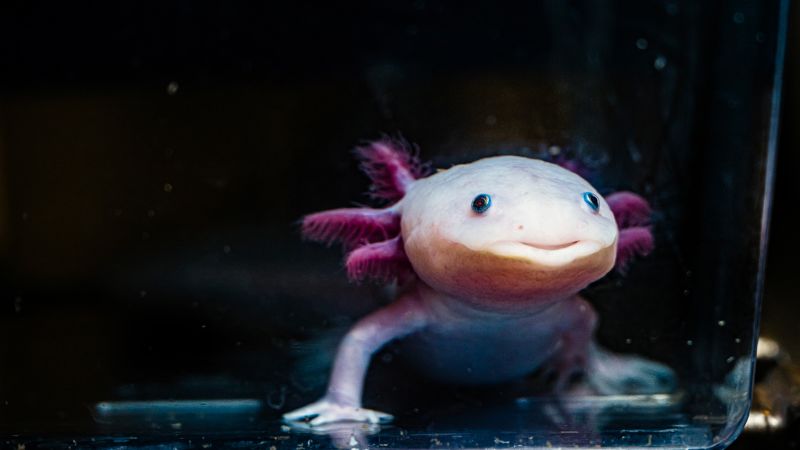The exploration of biological regeneration continues to garner significant interest, especially with certain species exemplifying extraordinary regenerative abilities. A standout in this domain is the axolotl, a type of aquatic salamander recognized for its remarkable capacity to regenerate limbs lost due to injury or amputation. Recent studies, including one published in *Nature Communications*, have delved into this phenomenon, shedding light on the underlying processes that facilitate limb regeneration in these remarkable creatures.
The study’s senior author, James Monaghan, a professor of biology at Northeastern University, articulated a key question in this research: “What are the cues that instruct cells at an injury site to regrow a hand or an entire arm?” This inquiry digs deep into the intricacies of cellular communication during the regenerative processes. Researchers have identified retinoic acid, a compound frequently associated with retinol acne treatments, as a pivotal signaling molecule. This acid plays a crucial role in teaching axolotl cells where and how to regenerate limbs post-injury.
Monaghan highlighted the significance of retinoic acid not just in axolotls but also in the development of human embryos, where it directs cell differentiation for various body parts. Unfortunately, as human cells mature, they often lose the ability to respond to these regenerative signals. This disconnect raises intriguing possibilities about how understanding axolotl limb regeneration might inform medical advancements for humans.
The experimentation process involved utilizing genetically modified axolotls that displayed fluorescent green markings, revealing the areas where retinoic acid activates cellular responses. Initially, researchers took a rather aggressive approach by injecting excessive retinoic acid into the salamanders, resulting in scenarios where regeneration overreached, with entire arms regenerating instead of just hands. Catherine McCusker, an associate professor from the University of Massachusetts Boston, commented on this unexpected phenomenon, suggesting that the excess activation of various genes could lead to unintentional regenerative outcomes.
To refine their understanding, Monaghan’s team shifted their focus to studying how axolotls utilize natural levels of retinoic acid during regeneration. They discovered that a particular enzyme, CYP26B1, is responsible for breaking down retinoic acid within the axolotls’ bodies, serving as a regulatory mechanism. Blocking this enzyme produced effects similar to those observed with excessive retinoic acid injections, thereby demonstrating how natural levels of retinoic acid are finely tuned through its degradation.
This discovery that an enzyme restricts the regeneration process pivots towards understanding the broader regulatory systems in play. When axolotl cells encounter injury, they undergo a remarkable process known as dedifferentiation, reverting to a more primitive, embryonic state capable of generating new limbs. Human cells, conversely, do not possess this ability and instead proceed with a healing process that often results in scarring rather than regeneration.
A tantalizing question emerges from these findings: could there be a method to enable human cells to respond similarly to axolotl cells? Monaghan posits that gene therapy could potentially activate or deactivate specific genes, which may restore some regenerative capacities in human cells. This line of inquiry aligns with advancements in genetic technologies, such as CRISPR, which offer promising tools for manipulating DNA for therapeutic purposes.
While full human limb regeneration remains a distant prospect, the research into retinoic acid signaling in axolotls may pave new pathways for developing regenerative treatments. McCusker points out the potential of returning regenerative capabilities to human cells, not only for healing but also for preventing harmful scarring in the process. With ongoing research into how to accelerate limb regeneration, we may eventually harness the inherent wisdom of biological regeneration found in species like the axolotl to inform groundbreaking innovations in human medicine.
In conclusion, the journey into the secrets of limb regeneration through the lens of axolotls not only highlights the wonders of biological diversity but also holds the promise of transforming our understanding of healing and regeneration in humans. The research emphasizes the importance of continued exploration in basic biology, suggesting we may uncover novel methods previously considered unattainable in contemporary medicine.



